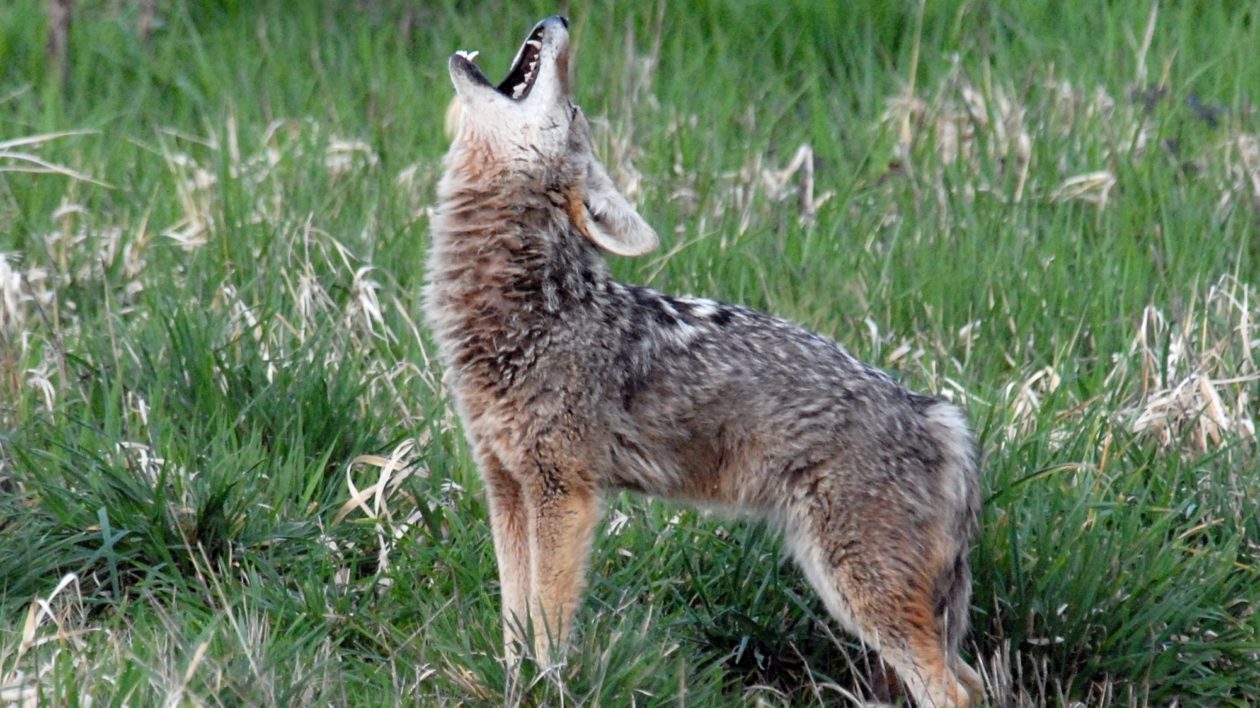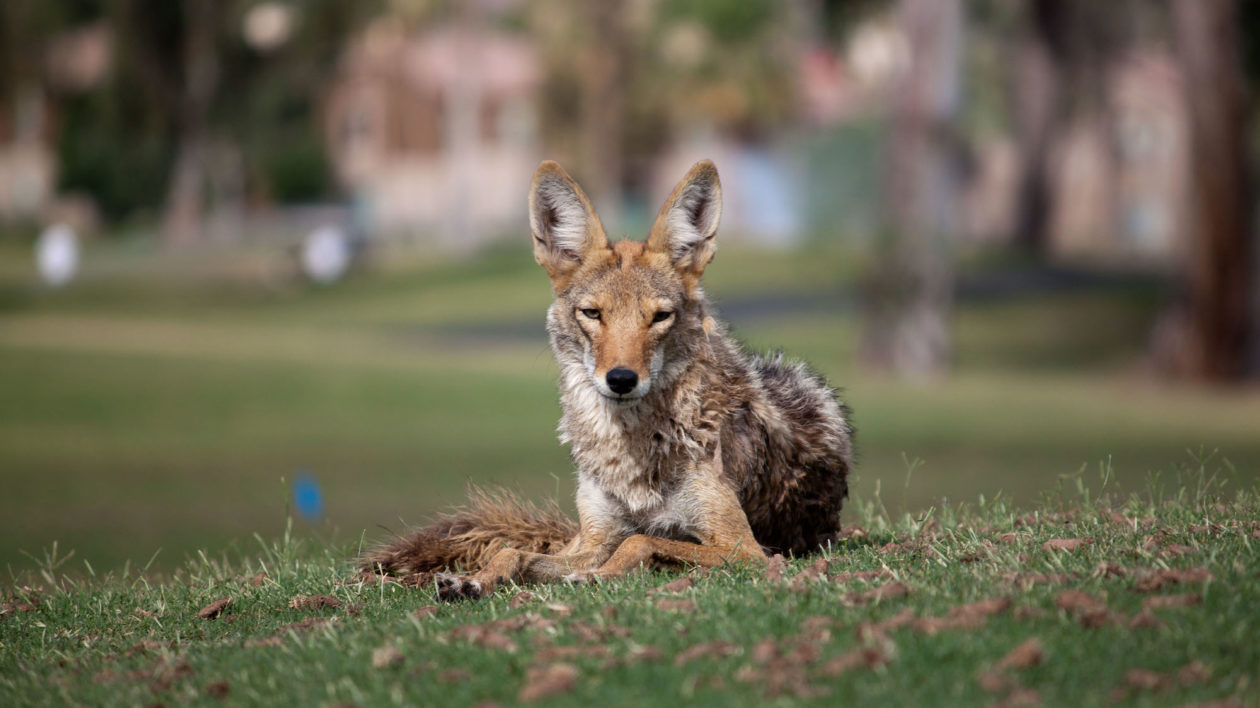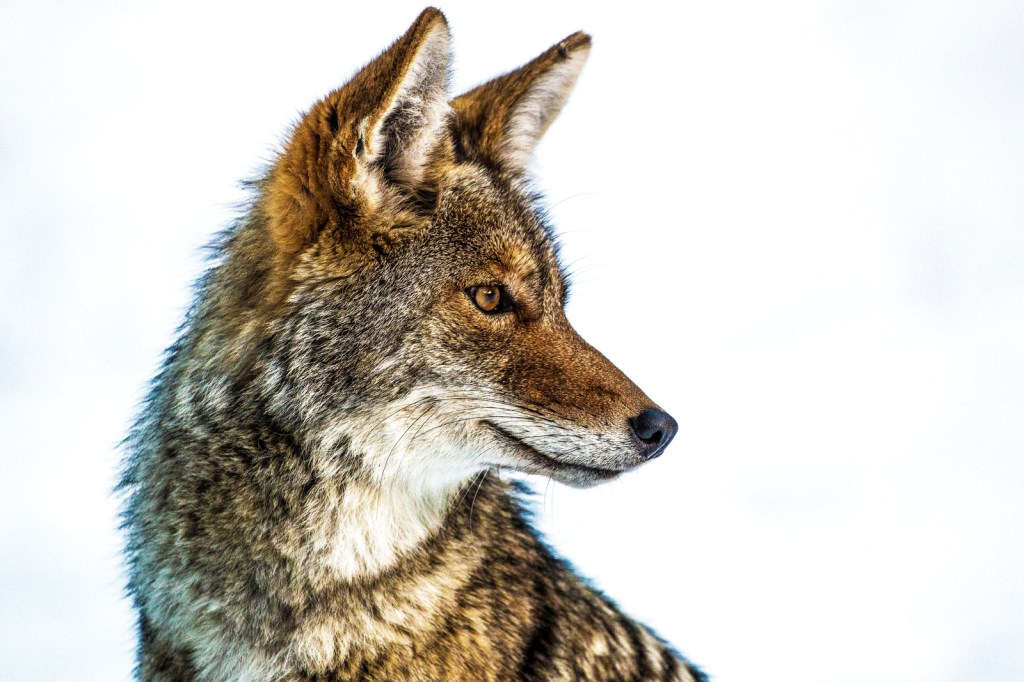I stepped outside last night to take some glass bottles to the recycling bin. The evening was clear, cold and seemingly silent. I hurried with my task, no wanting to linger in the chill. And then a howl rippled through the air. Coyote. The sound echoed through the neighborhood, carrying clearly from a nearby hillside.
I stopped and enjoyed the vocalizations. The long howls were interspersed with sharp yips, sounding like multiple animals. It lasted for several minutes.
I never tire of that sound, no matter how many times I hear it. And this time of year, I enjoy the coyote concert frequently.
Coyotes are one of the most vocal mammals. And they’re also now found widely, so if you live in North America, there’s a good chance that you have some roaming near you.
You can hear them at any time of year, but you may notice increased activity in February and March. And, if you’re like me, you’ll find the howling particularly resonant on a cold winter’s night. Here’s what’s going on.

The Pair Bond
Quite simply, it’s breeding season. While the exact timing varies, depending on geography, coyote breeding season generally occurs between late January and March. Coyotes are generally monogamous, forming strong pair bonds for several years. Some researchers state that the coyotes will remain together until one of the pair dies.
Coyotes are also territorial. The pair howls and yips to let other coyotes know that they have an established territory and not to intrude.
Coyote researcher Brian Mitchell describes the sounds you’re likely to hear at this time of year:
“Group yip-howls are produced by a mated and territorial pair of “alpha” coyotes, with the male howling while the female intersperses her yips, barks, and short howls. “Beta” coyotes (the children of the alpha pair from previous years) and current year pups may join in if they are nearby, or respond with howls of their own.”
Mitchell also notes that other nearby pairs may then respond, announcing their own territories. At such times, it can sound like a cascade of howls across the landscape.
According to Mitchell, this is not the only time of year that coyotes establish their territorial boundaries. The pups are born later in spring, and will form a loose family group. A pack of coyotes howling is an iconic sound of the American West, and it likely serves dual functions. Mitchell writes:
“The group yip howl is thought to have the dual purpose of promoting bonding within the family group while also serving as a territorial display. In other words, the coyotes are saying “we’re a happy family, and we own this turf so you better keep out.” In a sense, the group howls create an auditory fence around a territory, supplementing the physical scent marks left by the group.”

Song Dog
Howling may be the most recognizable coyote vocalization, but these canids actually have a wide repertoire of sounds. (One of the animal’s more endearing nicknames is “song dog”). Researchers generally identify 11 vocalizations that serve a variety of functions, from alarm to warning to socialization.
There is much we don’t understand about the coyote’s calls. Their “language” is likely far more complex than we can comprehend. Researchers like Mitchell note that coyotes have accents that vary geographically and even among family groups, much like humans. And coyotes can recognize another coyote by its distinctive call.
Even though coyotes are one of the most common and adaptable predators in the world, there is much we don’t understand. And there’s also a lot of contradictory information – and complete nonsense – written about coyotes.
There are two reasons for this. Coyotes are relentlessly persecuted throughout their range. A lot of people kill or attempt to kill coyotes, and oftentimes they present their own opinions as fact.
For instance, people often grossly overestimate the number of coyotes in an area. When a couple of coyotes begin calling, their sounds can vary rapidly in pitch and sequence, which can sound like a lot more coyotes than actually are there. Coyote howls often echo against hillsides, compounding the confusion.
This actually may provide a benefit to coyotes. As they establish their territory, sounding like a big pack may deter other coyotes from entering the territory.
I have often heard local hunters describe areas “absolutely overrun with coyotes,” based solely on the howling they’ve heard. Most likely, they were fooled by just a few animals.

A Flexible Lifestyle
I suspect there is another reason for a lot of the contradictory information about coyotes and their behavior. It’s because coyotes behave differently depending on habitat, interactions with humans and other factors.
Coyotes are one of the most adaptable predators. They are found in the Idaho wilderness near my home, but also can live in the midst of large cities like Chicago and Los Angeles. They live in farm country, in suburbs and in urban parks.
The reason that they can thrive in so many different habitats is that they are very flexible and adaptable. They will change their diet and their habits to fit the environment.
So a coyote’s territory and pack bonds are likely different on the public lands of the Rocky Mountains than they are in a suburban neighborhood.
One of the differences some researchers have recognized is that urban coyotes likely vocalize less. I live in an area surrounded by a large wildlife management area and a river greenbelt. I hear coyotes regularly. If you live in a city, you may not hear coyotes as much – but that doesn’t mean they’re not there. They have just found it easier to survive by being quiet.
If you do happen to find yourself in some wide-open spaces this month, step outside in the night and have a listen. You may enjoy one of the great sound shows in nature, the chorus of yips and howls. The coyote survives and thrives despite us, and its howling serves as a reminder to the wildness still in the world.




Good read and info thanks! I wanted to add, that we don’t need to go outside sometimes in our area of South Georgian Bay, Ontario, Canada to hear them. Coyotes woke us up last night they were so loud, right outside in our field. Stayed warm on this cold Feb night and could listen (;
I am so grateful to live and butt up to a state-managed park. I live with wildlife as my neighbors, and I absolutely love it. The Coyotes are abundant in this area, and I’ve often seen the adults running with pups. When I hear them howling in the evening I step outside to listen to their various calls. It’s a sound I never tire of. Not everyone feels at home living so close to our four-legged neighbors. It can be challenging on both sides. People are fearful of coyotes and coyotes are fearful of people. They’re at risk of being shot at, trapped, or hit by a car, which actually did happen in my neighborhood.
I don’t know if it happened in the evening or in the early morning but at the crack of dawn, the coyotes that I assume were in the pack of the deceased, howled like I’d never heard them before. To me, it sounded like a gathering of mourning. Perhaps they were saying goodbye to a family member.